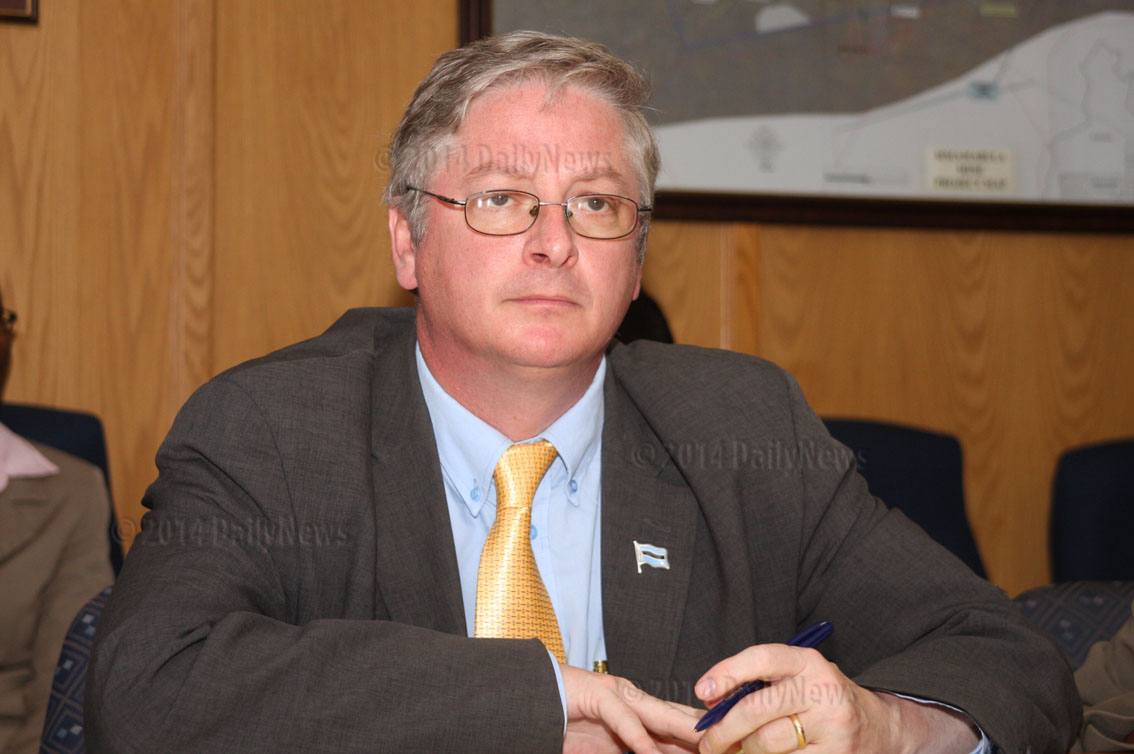The Anglo-German scramble for Northern Botswana
03 Apr 2014
In our last instalment it was noted that the 1884-85 establishment of German and British Protectorates over large parts of Namibia and Botswana respectively still left the future control of the then regionally powerful Batawana Kingdom and adjacent Chobe region in dispute between the two imperial rivals.
Berlin’s claims gained greater intensity a few months later with the publication of “Article One of the German Imperial Ordinance no. 26 dated the 30th of December 1886” in which the German authorities formally laid claim to the entire region.
Yet, notwithstanding aggressive push into Namibia and beyond, for many years Germany’s colonial pretensions were not matched by the establishment of an effective administrative presence on the ground.
At the time Chancellor Bismarck’s government expected the DKG, i.e. the German Colonial Company of South West Africa, to take the lead in developing the area.
But, the undercapitalised company was only able to initiate a few small scale projects. For its part the imperial government limited its own expenditure before 1889 to the posting of a mere three officials, including a military Governor by the name of Hienrich Ernest Goering (father of Adolph Hitler’s notorious future Deputy, Herman Goering).
Working out of a mission school’s class room in the Ovaherero village of Otjimbingwe, Goering and his subordinates issued a total of six regulations in their first three years of residence, none of which were actually enforced.
When, in late 1888, the Ovaherero leader Maharero nullified his so-called Protection Treaty with the Kaiser, the Otjimbingwe office was hastily evacuated. Goering’s party were then forced to place themselves under British protection at Walvis Bay, further advising other Europeans in the region to do the same.
Thus humiliated and faced with the option of either pulling out of Namibia altogether or deepening their commitment, the Germans finally decided to establish a moreextensive military presence.
On the 24th of June 1889, 21 troops under the command of Captain Curt von Francois landed at Walvis Bay. This was followed by another 40 man contingent in January 1890. With the departure of Goering, in August 1890, Von Francois became the senior German official in the territory.
But his authority in the interior was initially limited to the area around Windhoek, where he established his headquarters in October 1890. For their part the rulers of the largest groups living in central and southern Namibia – the Ovaherero, Ovambanderu, and Nama – continued to resist imperial control.
Further to the north Germany’s claims over such communities as the Ovahimba and Ovambo existed on paper only. The relative weakness of the German position in northern Namibia provides a partial context for the establishment in July 1890 of what to this day survives as the northern boundary between Botswana and Namibia, which was defined by Article III of an “Agreement between Great Britain and Germany, respecting Zanzibar, Heligoland, and the Spheres of Influence of the two Countries in Africa”.
A product of bilateral diplomatic discussions held in Berlin and London, most especially during May and June of 1890, as suggested by its title the Agreement was a comprehensive understanding between the two powers that resolved their overlapping claims throughout Africa.
At the time their major area of imperial conflict was over their conflicting territorial claims in East Africa. For the involved diplomats, who were neither well versed nor concerned about the finer points of local geography, the boundary between the Bechuanaland Protectorate and German South-West Africa was a relatively minor matter.
In this context it is notable that the by then self-governing (settler regime) Cape Colony, some of whose citizens had a significant stake in any border arrangements in the region, was not consulted.
Germany’s desire to uphold its claim to Zambezi river access for its South West Africa Protectorate had been communicated to Britain’s Ambassador in Berlin, Sir Edward Malet, by Bismarck on 24 November 1888.
In a subsequent 2 September 1889 dispatch by the Foreign Secretary, Marquis of Salisbury, to the German Ambassador, Count Hatzfelt, it was suggested that Lake Ngami be seen as equally under German and British influence “and that Germany shall be secured free access from that lake to the upper waters of the Zambezi.”
Lake Ngami, which in the late nineteenth as well as twentieth centuries was often dry, is of course not linked with the Zambezi by any permanent water.
On 30 September 1889 the German Charge d’Affaires, Count Leyden, proposed to the British that Germany acquire rights to Ngamiland west of 24 east longitudes and north of 22 south latitude.
But, on the 9 November 1889, the British Colonial Office, having consulted with its High Commissioner for South Africa, expressed its strong opposition to recognising any German claims to Ngamiland.This stand was communicated to Malet in Berlin on 17 February 1890. Ends
Source : Jeff Ramsay
Author : Jeff Ramsay
Location : GABORONE
Event : Column
Date : 03 Apr 2014





